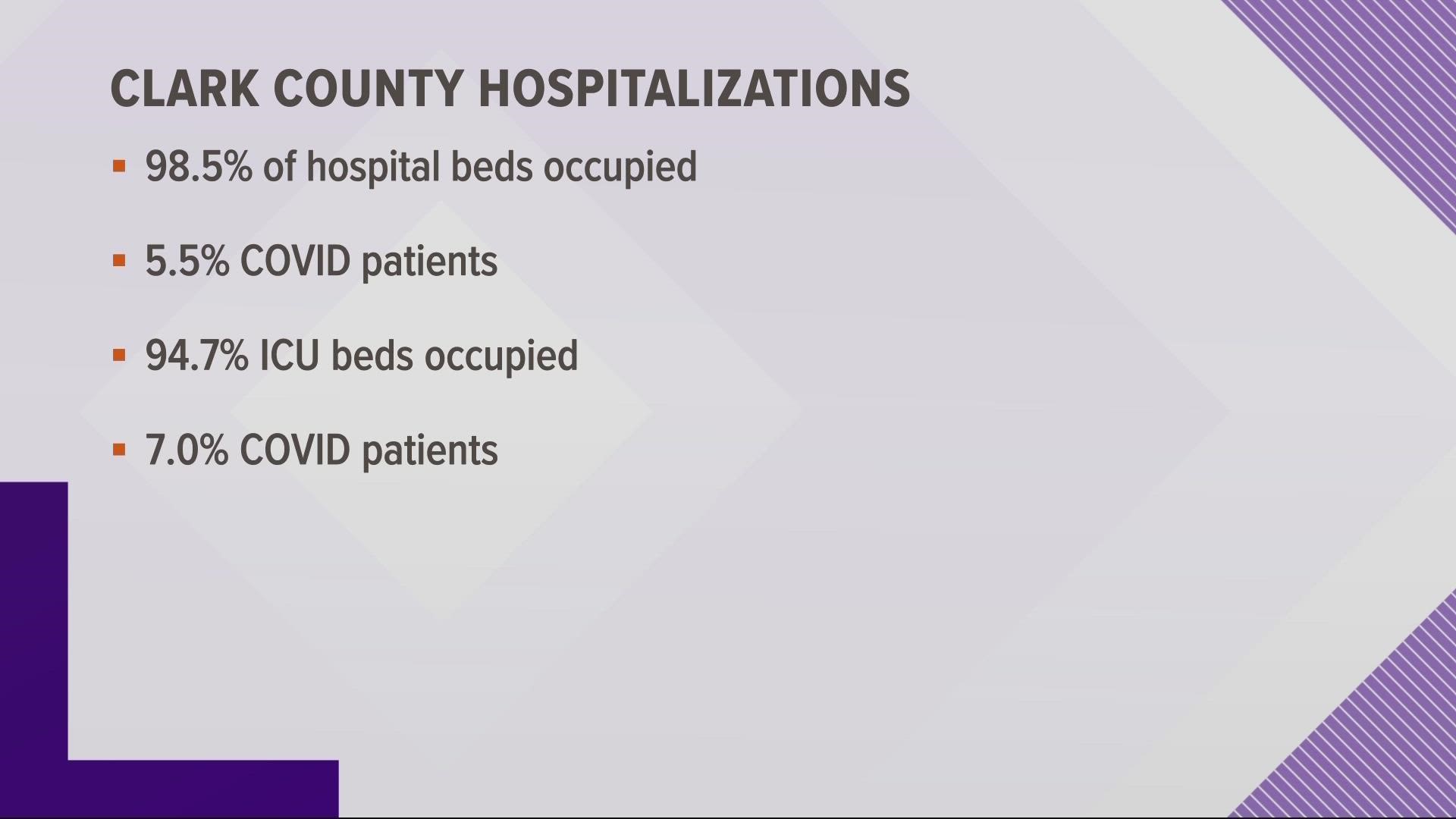VANCOUVER, Wash. — The latest COVID-19 variant has been making its way across the country and it is now firmly in Clark County, where new cases have doubled in the latest weekly report.
It’s important to put the statistics in context: even with the recent rise, cases and hospitalizations are still way down compared to a few months ago.
Health officials know the coronavirus pandemic has delivered a lot of surprises and pain along the way. While this mini surge is not expected to skyrocket, Clark County Public Health is not taking that for granted.
“We're watching things really closely, we are seeing an increase in case rates and a little uptick in hospitalizations; this is kind of what we're seeing across the state,” said Doctor Steven Krager.
Krager is Deputy Health Officer for Clark County and serves other counties in Southwest Washington as well. He has been watching and responding to COVID-19 since the beginning.
"We're in a very different place, we have so much background immunity both from vaccination as well as previous infection,” said Krager.
More than 65% of Clark County residents five years and older are fully vaccinated—that, along with some immunity from previous infections, helps keep the virus from taking off.
Still, the BA.2 variant has moved in and is causing a surge.
Clark County is up to 70 new cases per 100,000 residents, compared to 35.7 last week. While that rate has doubled, it is a far cry from the 1,715 per 100,000 new case level at the height of omicron in February.
In terms of hospitalizations, right now about 98% of beds at Clark County hospitals occupied. COVID patients make up 5.5% of those. Intensive Care Unit beds for the sickest patients stand at 94% occupied, with 7% occupied by COVID patients.
Despite Clark County hospitals being nearly full, Dr. Krager believes they are managing well and the health care system is adjusting as needed.
“The less strain we can put on it the better for everyone," he said. "Less stress on our health care workers, more people able to take care of those procedures they put off for a long time. There's a lot of good reasons to keep stress on our health care system low.”
There is also helpful news if you do get infected. Various treatments are more widely available now, including Pfizer’s Paxlovid. If taken within the first five days of infection, it cuts the risk of hospitalization or death by 90%, making it important to test as soon as you experience any symptom.
Dr. Krager said vaccines are the best start at protection including boosters and fourth shots, if you qualify.

